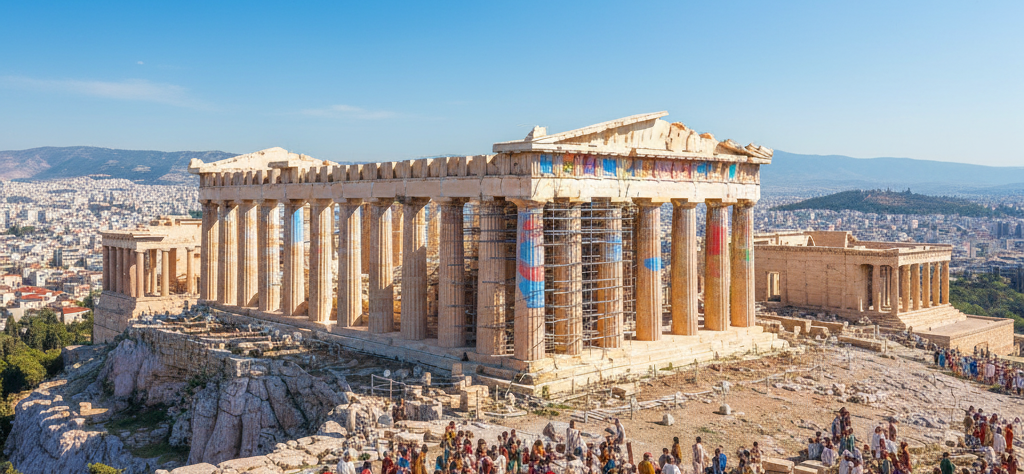Perched atop a rocky outcrop overlooking the bustling city of Athens, Greece, the Acropolis stands as an enduring symbol of ancient Greek ingenuity, democracy, and artistic mastery. This fortified citadel, dating back to the 5th century BCE, integrates profound historical significance with its dramatic geographical setting, offering insights into the birthplace of Western philosophy, theater, and architecture. As a UNESCO World Heritage site, it draws millions annually, blending the rugged Attica landscape with timeless ruins that echo the glory of classical antiquity.

Historical Origins and Golden Age
The Acropolis’s history spans millennia, with evidence of habitation from the Neolithic era around 3000 BCE. It evolved from a Mycenaean fortress in the Bronze Age to a religious sanctuary under the Athenians. The site’s pinnacle came during the Golden Age of Pericles (461–429 BCE), following Persian invasions that razed earlier structures. Rebuilt with Pentelic marble, key monuments like the Parthenon—dedicated to Athena—were designed by architects Ictinus and Callicrates, sculpted under Phidias’s direction.
This era reflected Athens’ democratic ideals and cultural flourishing post-Persian Wars. The Erechtheion, with its iconic Caryatid porch, honored multiple deities, while the Propylaea served as a grand gateway. The Acropolis also hosted festivals like the Panathenaic Procession, immortalized in the Parthenon’s friezes, now controversially housed in the British Museum amid repatriation debates.
Geographical Prominence and Strategic Design
Geographically, the Acropolis’s elevated position at 156 meters above sea level provides natural defenses and panoramic views over the Saronic Gulf and surrounding plains:
- Rocky Plateau: The limestone hill, eroded into a flat-topped mesa, offered impregnable walls against invaders, with caves like the one housing the sacred olive tree of Athena adding mythological layers.
- Attica Region: Situated in the arid Mediterranean climate of central Greece, it overlooks fertile valleys fed by the Cephissus River, influencing urban development from ancient times to modern Athens.
- Seismic Considerations: Built in an earthquake-prone zone along the Eurasian-Anatolian plate boundary, structures incorporated flexible joints to withstand tremors, a testament to early engineering adapted to geology.
This vantage point not only symbolized divine protection but also facilitated surveillance over trade routes connecting to the port of Piraeus, bolstering Athens’ maritime empire.

Architectural and Cultural Legacy
The Acropolis epitomizes classical Greek architecture, with Doric and Ionic orders influencing Roman, Renaissance, and neoclassical styles worldwide. Its ruins, damaged by Venetian bombardment in 1687 and environmental factors, reveal innovations like optical illusions in the Parthenon’s columns for perceived perfection.
Culturally, it birthed Western thought through associations with philosophers like Socrates and Plato, whose ideas debated in nearby agoras shaped ethics and governance. The site’s influence extends to modern symbols, from U.S. Capitol designs to global heritage preservation efforts.
The Acropolis Today: Preservation and Exploration
In contemporary times, the Acropolis faces challenges from pollution, tourism, and climate change, prompting restoration projects like the Acropolis Museum’s glass floors revealing underground excavations. Virtual reality tours make it accessible globally, while geographical studies highlight its role in urban heat islands amid Athens’ expansion.
For history and geography aficionados, climbing its slopes at dawn offers a sensory journey through time, where ancient stones meet the Aegean horizon. The Acropolis reminds us how terrain and human ambition forge legacies that transcend eras.
